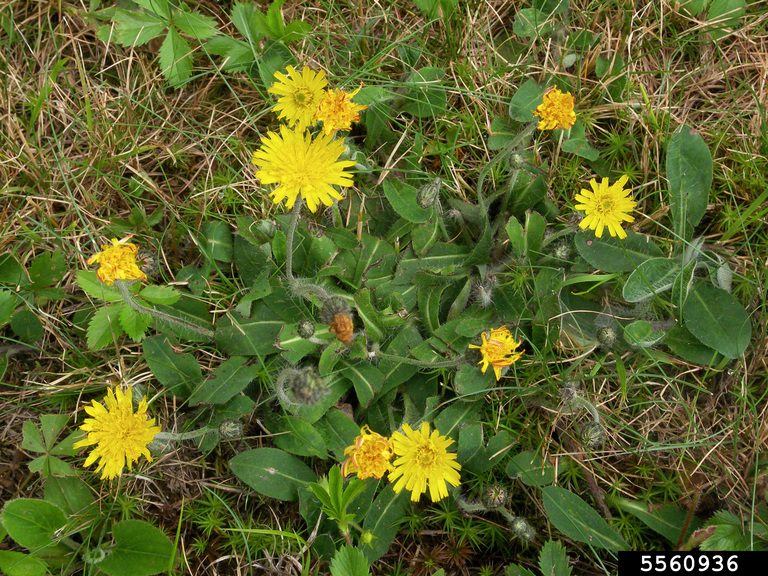Mouse-ear Hawkweed

Mouse-ear Hawkweed
(Hieracium pilosella)
Priority: - Prevent / EDRR
Tags: Terrestrial
Identification and Reproduction
Identification:
- Mouse-ear hawkweed is a perennial herbaceous plant that is low growing, growing up to 30 cm tall.
- Stems are slender and hairy.
- Leaves occur in the form of a basal rosette or sparsely on stolons. Leaves are flat, narrow and covered in hairs.
- Single flowers or pairs are found on the ends of stems. Flowers are dandelion-like with many petals. Bracts are covered in blackish glandular and white bristly hairs.
- Each rosette will produce one flower head.
- Blooms occur in May and June.
Reproduction:
- Plants can reproduce vegetatively or from seeds.
- Stolons will stretch and from axillary buds and form daughter rosettes.
- Seeds can be dispersed by wind.
- Stolon fragments are often spread by agricultural machinery.
Habitat & Ecology
- Common on open, sandy and semi-dry sites.
- It is found on grasslands, roadsides, pastures and sites that are commonly disturbed.
- It is well adapted to soil with low moisture and nutrient levels.
- Mouse-ear hawkweed is shade intolerant.
Impacts
Social:
- Seeds will often contaminate agricultural seed crops.
- Reduce forage availabilty for livestock.
- Reduce the quality and value of crops.
Ecological:
- Invades open space quickly and will out-compete native species.
Management
Prevention is a high priorty for this plant.
- Ensure that equipment, vehicles and tools are clean and free of debris.
- Considering increasing shade by planting native shrubs and trees.
- Promote healthy grass cover by seeding and fertilizing to prevent hawkweed establishment.
- Report this plant if you think you have seen it.
Resources
For more for details check out the Invasive Species Compendium datasheet on Pilosella officinarum (mouse-ear hawkweed).
For more details on how to distinguish and control hawkweed species please check out the King County Best Management Practices for Hawkweeds.
Download the Government of BC Invasive Species Alert for Mouse-Ear Hawkweed here.
Header photo (gailhampshire).




